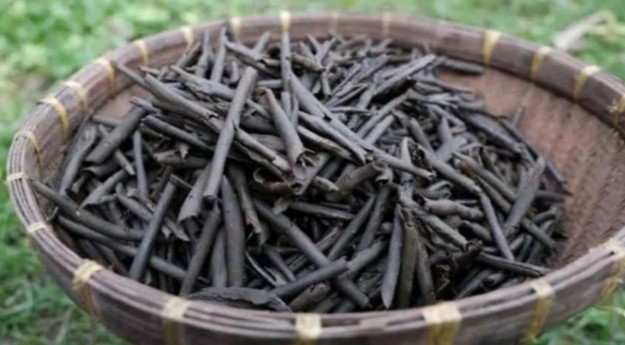Jakarta, Indonesia Sentinel — In Tuban, Indonesia, a unique snack has stood the test of time: Ampo, a treat made entirely from clay. Despite its unconventional main ingredient, Ampo has long been a staple snack for locals in Indonesia.
Today, this traditional delicacy is still produced in villages like Bektiharjo in Tuban. Beyond Tuban, Ampo can also be found in regions such as Cirebon and other areas across East, Central, and West Java.
A Historical Delicacy
Historically, Ampo was considered a delicacy, particularly in Tuban and Cirebon. While modern snacks have eclipsed its popularity in many places, local communities continue to preserve this culinary tradition.
The origins of Ampo date back to Indonesia’s colonial era when food shortages were widespread. People began using aluvial clay sediment from the banks of the Bengawan Solo River as a survival food. Over time, Ampo became more than just sustenance, gaining cultural significance in ceremonies and rituals.
The Making of Ampo
Creating Ampo involves a meticulous process. Special black clay is mixed with water to form a smooth, pliable dough. This dough is then shaped into large rectangular blocks and shaved into thin, stick-like rolls using a bamboo blade or knife.
The version of Ampo made in Tuban differs from that in Cirebon. Cirebon’s Ampo features larger, thicker rolls, whereas Tuban’s version is smaller and more compact. The rolls are sun-dried before being roasted over an open fire for 30 minutes to an hour until they turn black.
Study Finds AI-Generated Poetry More Preferred Than Human-Created
Once ready, Ampo boasts a nutty flavor and crunchy texture. Locals often enjoy it with a cup of tea or coffee, making it a versatile snack.
Beyond its role as a treat, Ampo is also used in cultural events, such as sedekah bumi (earth offerings), community celebrations, and harvest festivals, emphasizing its deep cultural roots.
The Science of Geophagy
The practice of consuming earth-based food is known as geophagy, and is not unique to Indonesia, it occurs in various tropical regions worldwide. Therefore, Ampo was one among the earth based food growing in Indonesia, made out of clay.
However, not all clay is edible. The clay used for Ampo is specially sourced, typically black clay with a certain quality, free from contaminants.
Locals believe Ampo has health benefits, particularly for digestion. Some even regard it as a cure-all remedy, highlighting its enduring reputation as a traditional medicine.
Ampo serves as a fascinating example of how culture and resourcefulness intertwine, showcasing Tuban’s culinary heritage and the resilience of its traditions in the face of modernity.
(Raidi/Agung)
























